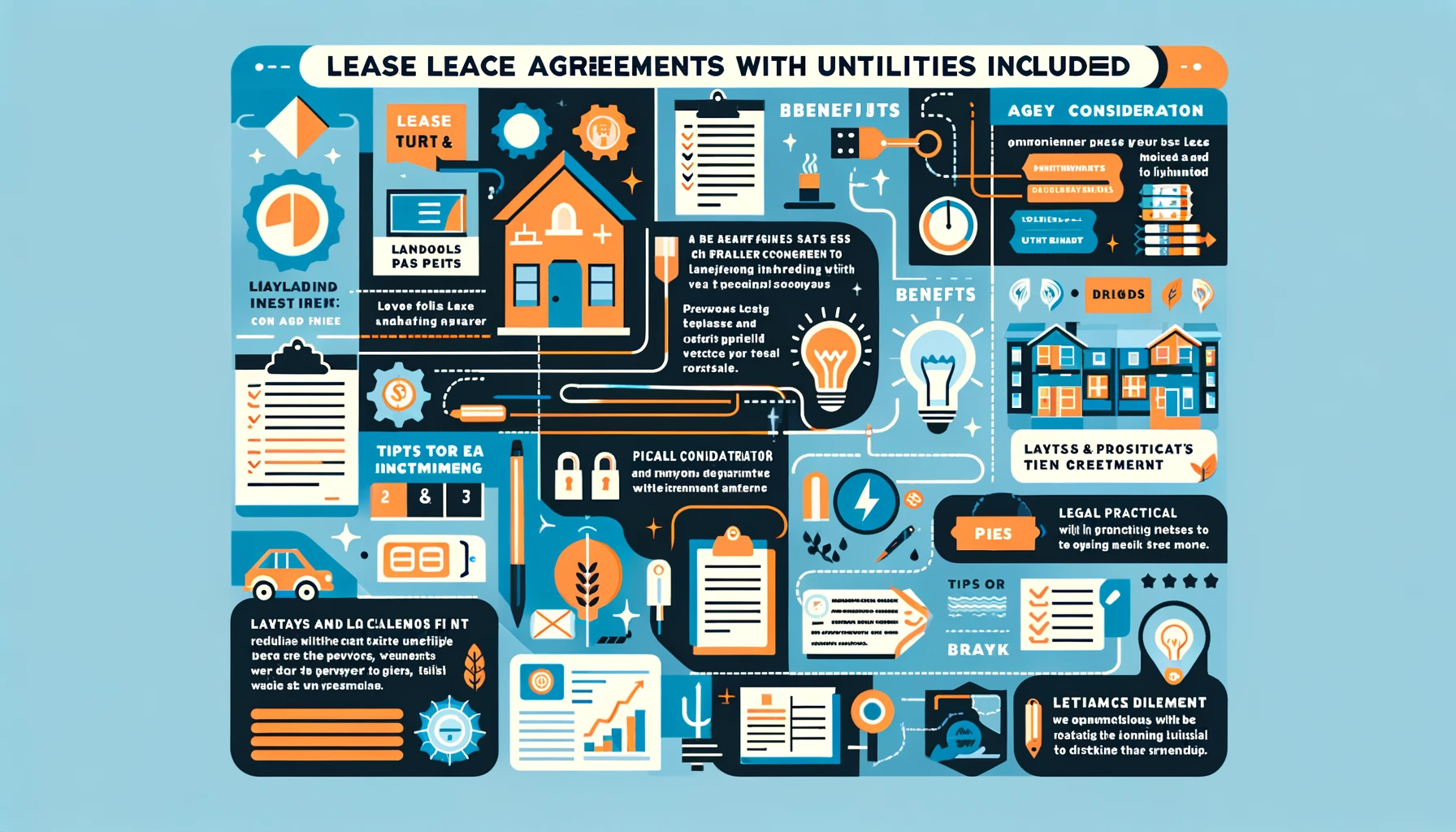Comprehensive Guide to Lease Agreements with Utilities Included: What You Need to Know
In the realm of rental agreements, the inclusion of utilities can significantly impact both landlords and tenants. Lease agreements with utilities included offer simplicity and predictability for tenants, while presenting a unique set of considerations for landlords. This comprehensive guide delves into the intricacies of crafting and managing such lease agreements, ensuring clarity and mutual satisfaction. We will also integrate authoritative .gov, .edu, and Wikipedia links to provide additional resources and enhance the credibility of the information presented.

Understanding Lease Agreements with Utilities Included
A lease agreement with utilities included means that the payment for utilities such as electricity, water, gas, and sometimes internet and cable, is incorporated into the monthly rent. This setup can offer advantages such as easier budgeting for tenants and potentially higher rental income for landlords. However, it requires careful consideration and precise contract terms to avoid complications.
Key Components of a Utilities-Included Lease Agreement
Detailed Description of Utilities Covered: Clearly specify which utilities are included in the rent. For a more in-depth understanding of what constitutes as utilities, visit the U.S. Department of Housing and Urban Development.
Usage Policies and Limitations: Establish guidelines for reasonable use of utilities to prevent excessive consumption.
Adjustment Clause: Include provisions for adjusting the rent if utility costs significantly increase.
For general insights on lease agreements, the Legal Information Institute at Cornell Law School provides a valuable overview.
Benefits and Challenges
Benefits for Tenants:
Predictability: Simplifies budgeting by combining living costs.
Convenience: Eliminates the need to set up individual utility accounts.
Benefits for Landlords:
Attractiveness: Properties with utilities included can appeal more to potential renters.
Simplified Billing: Streamlines the management of utility bills.
Challenges:
Usage Disputes: Potential disagreements over what constitutes 'reasonable use'.
Cost Fluctuations: Utility costs can vary, impacting profitability.
Legal and Practical Considerations
When drafting a utilities-included lease agreement, several legal and practical considerations must be addressed to protect both parties and ensure compliance with state and local laws.
Local Regulations: Some jurisdictions have specific requirements or caps on utilities included in rental agreements. For example, the New York State Homes and Community Renewal offers guidelines on rent regulation.
Fair Housing Act: Ensure that the lease terms comply with the Fair Housing Act, prohibiting discrimination against tenants.
Utility Rate Increases: Factor in potential increases in utility rates over the lease term and how they will be addressed.
Energy Efficiency: Encourage or invest in energy-efficient appliances and fixtures to control utility costs. The U.S. Department of Energy offers tips on improving energy efficiency.

Create & Review Your Contracts 10x Quality and Ease
Lawyer-level AI handles all your contract needs, with real lawyers providing safeguarding support

Crafting the Agreement: Tips and Best Practices
To create an effective lease agreement with utilities included, consider the following tips and best practices:
Transparency: Clearly outline the terms regarding utilities in the lease agreement, avoiding vague language.
Fair Usage Policy: Define what constitutes reasonable utility usage and the steps to be taken if this is exceeded.
Regular Reviews: Include terms for regular review of utility costs and consumption patterns, with the possibility of adjusting the rent accordingly.
Energy Conservation Measures: Incorporate terms encouraging or requiring energy-saving practices.
For drafting legal documents, resources like FindLaw can provide templates and legal advice.
Conclusion
Lease agreements with utilities included present a unique set of advantages and considerations for landlords and tenants. By approaching these agreements with thorough understanding, clear communication, and detailed provisions, both parties can enjoy a harmonious rental experience. For further reading and resources, turning to trusted .gov, .edu, and Wikipedia links will ensure you have accurate and authoritative information at your fingertips.
Remember, consulting with a legal expert familiar with your state's laws and rental regulations is crucial in drafting a lease agreement that is fair, comprehensive, and legally sound.

